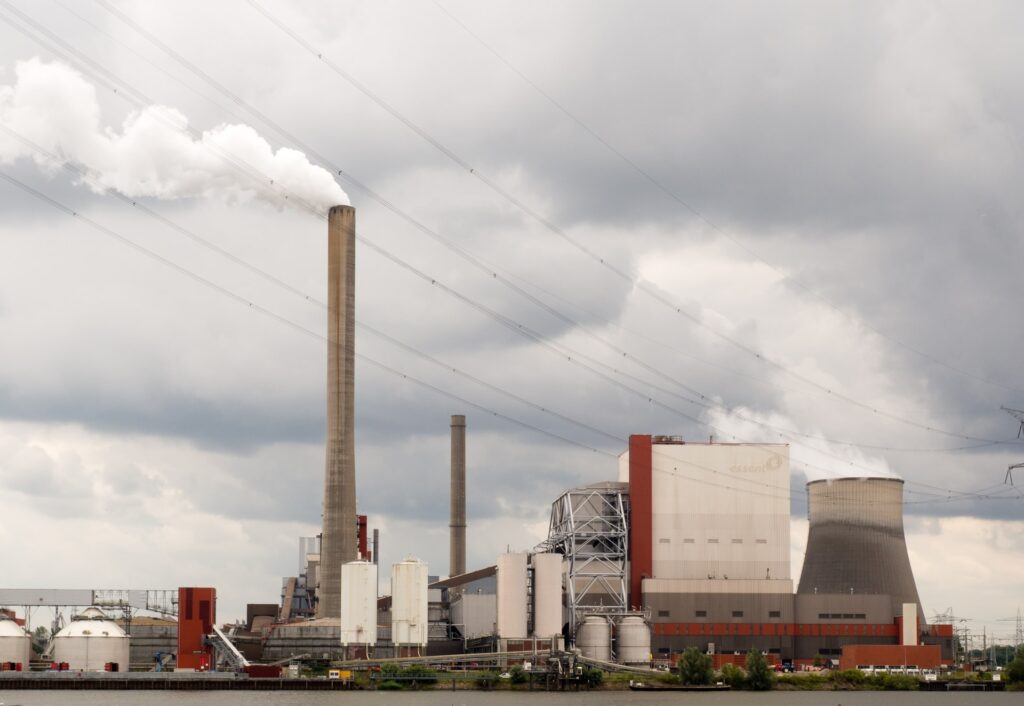I know.
Coal. It’s the dirtiest of fossil fuels. Responsible for millions of premature deaths per year. Emitter of more carbon than any other energy source. Climate enemy #1.
And I’ve been dishing out loans to the companies that enable all of this for years.
Unfortunately it’s not just coal companies, either. I’ve loaned money to all of the bad guys — oil and gas, cement, extractive mining companies. You name, I’ve probably made a loan to them.
Let me explain.
How and why I made these loans
To start this story, I need to introduce a few important characters: the folks at US Bank and Capital One.
I first met my banker when I was just a kid. My parents struggled with money when they were young. They never had anyone to show them how credit card interest works or how to build credit. So when my brother and I were still in grade school they took us down to US Bank and signed us up for an account.
Every summer my brother and I would work small jobs, save up our money, and then put it in our savings accounts.
That’s when it all started.
At the time I never thought to ask how a bank works or where my money went. I just figured the nice bank teller took my jar of change and placed it in the vault until I needed it. But, of course, that wasn’t how it worked.
No, instead that day I made my first deposit, the bank teller took my jar of change and handed it over to one of her teammates, who in turn handed it over to one his teammates, who flew halfway around the world to a small village in a poor country. When he arrived, he asked a taxi-driver to take him to the headquarters of Evil Corp, one of the world’s biggest coal companies. Then he took the glass elevator to the top floor of their office where the CEO was waiting. They shook hands, talked about golf for a few minutes, and then the banker put my jar of money on the table. The CEO explained his plan to use this money to build a new coal plant that would wreak unprecedented havoc on the people of his country and mother nature’s lungs. The banker was impressed. And so they cut a deal.
And that’s how it went for years, no, decades. As I saved more and more, I funded bigger and bigger projects.
But here’s the worst part: I didn’t even make any money doing all this. Most of the time, I lost money, in the form of different various fees and charges.
To put it mildly, I got hustled.
I’m a changed man
It’s been two weeks since I ended this terrible relationship and got clean. As I look back on all those projects I funded, I can’t help but feel guilty.
But as the great Brene Brown once wrote, “Guilt is adaptive and helpful—it’s holding something we’ve done or failed to do up against our values and feeling psychological discomfort.” All of our power rests in what comes after this guilt, in what we choose to do next. Personally, I chose to break up with my bank and end a toxic relationship.
I’m writing all of this to you, dear email subscriber, because my sense is that I’m not alone. I wonder if you, too, have been hustled in this great sham? Most people have and still are being hustled.
But fear not, because I spent dozens of hours over the last few weeks creating a guide just for you. I researched all the climate-friendly banks out there, signed up for accounts, and tested them out.
It was a lot of work. I think I got myself added to an FBI watchlist in the process. But if just one of you reads that guide and ends a toxic banking relationship, it will be worth it.
You can check out the full guide here.
In all seriousness, if you bank with Chase, Wells Fargo, Citi, Bank of America, or US Bank, you’re getting hustled. They’re using your money to fund hundreds of billions of dollars worth of fossil fuel projects. And they’re charging you a bunch of fees in the process.
But there are some great alternatives out there. It’ll take you 15 minutes to make the switch.
It’s like the Geico gecko always says, “15 minutes or less could save you the Milky Way’s only habitable planet.”
Let’s save this lovely planet.
—
Alright, internet strangers, that’s all for now!
A special thanks to all the people who took some time to respond to my last story about gas stoves and air quality. Part 2 is in the works.
As always, I’d love to hear from you. What are you doing right now in your life to cut emissions or live in closer alignment with your values — either personally or collectively? What’s stopping you from doing more of it?
